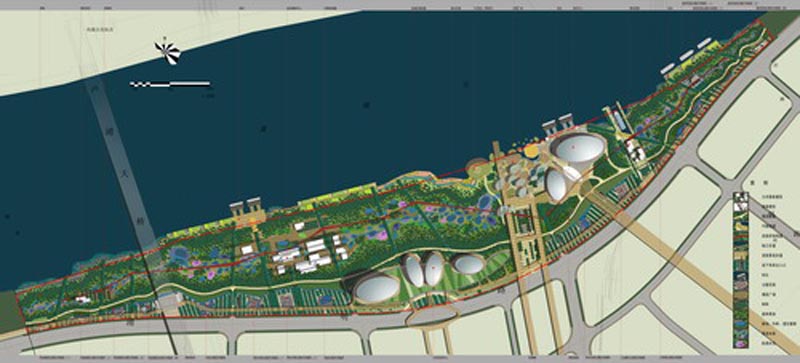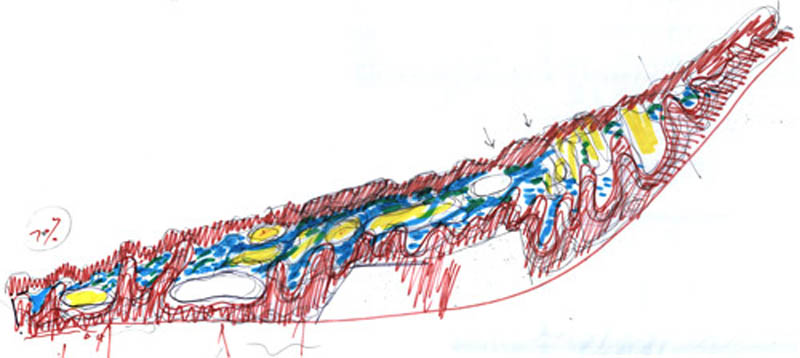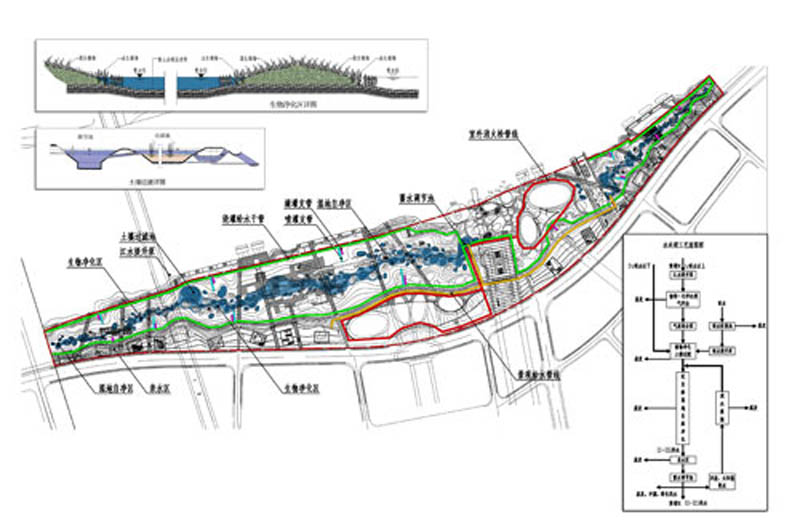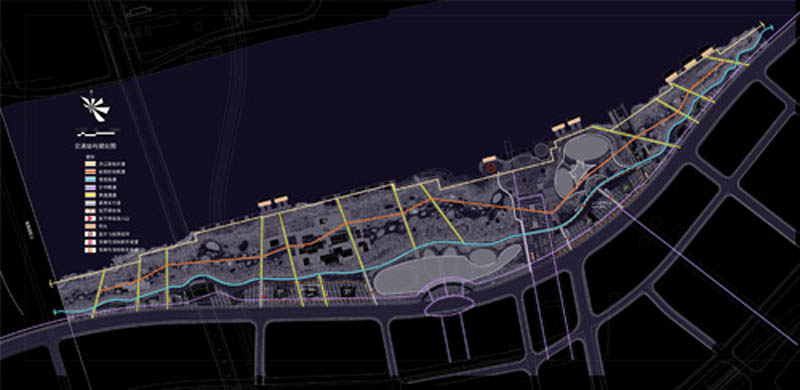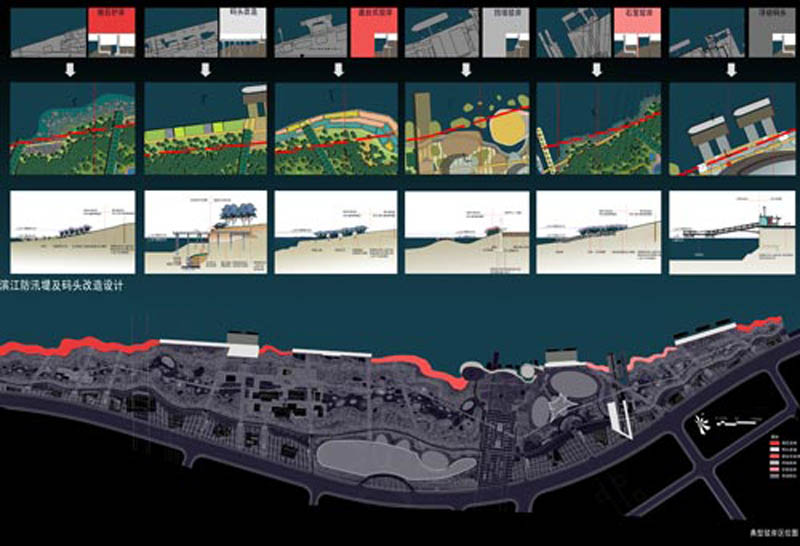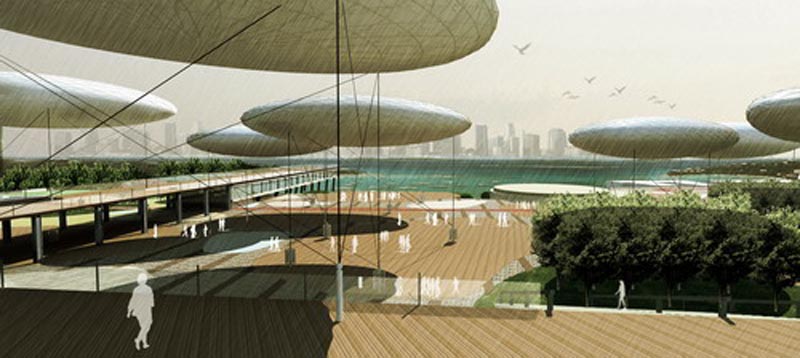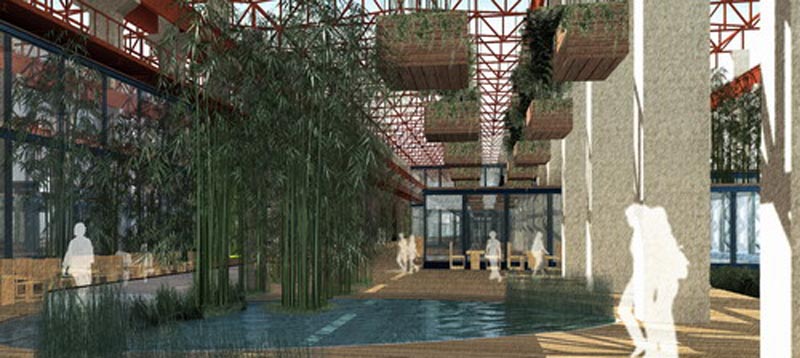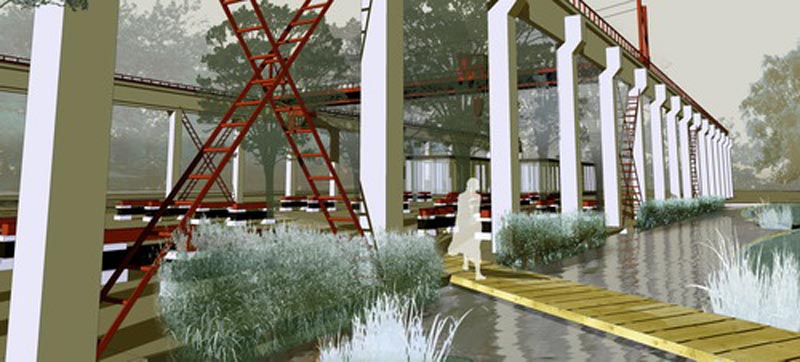Shanghai World Expo 2010 Central Space Planning
Project Information
- Project Location:
- China Shanghai
- Project Scale:
- 42 Hectares
- Design Time:
- May 2006
- Client:
- Shanghai World Expo Land Development Co., Ltd.
- Related Papers
Project Profile
1. Project Statement
The central open space planning of Shanghais Pudong district for the 2010 World Expo faces 5 challenges: 1) flooding, 2) ecological restoration, 3) crowd evacuation, 4) heritage conservation and 5) culture demonstration.
Based on the concepts of ecology and humanism, we proposed “one mirror between two banks” as a green belt structure, meaning to restore an ecological green matrix on the existing brown field. This plan solves the 5 challenges above while also making the site a riparian ecological area and an open green space for the Shanghai Expo and the city, which not only meets the demand during the World Expo, but will also be used by the citizens beyond the Expo.
2. Design Strategy
6 design strategies in this deisgn
Strategy1: “One mirror between two banks” structure as the green matrix
This structure solves the problem of flood control and the use of the land, as well as decreases the amount of earthwork needed. Three flood levels are considered: the 1000 year water mark is 6.7m, 100 year water mark is 5.4m, and the 20 year water mark is 4.5m. The whole matrix represents the harmony of natural power and humanity, and landscape ecology as an art.
Strategy 2: 4 types of road which is a convenient and comprehensive traffic and experiencing networks
Underlying the natural and manmade features of the green matrix, we planned 4 types of roads . The linear avenue in the north-south direction of the networks connects the exhibition area and the green area, reaching to the river. During the Expo, the 10m wide pedestrian road is paved with bamboo materials to help evacuate the crowd, while after the Expo this pedestrian road will be restored to a green area, and the bamboo material will be mashed and used to fertilize the soil.
Strategy3: The matic cultural knots, which is to demonstrate the past- the current- the future of Shanghai.
Throughout the site are distributed several thematic cultural knots. The main four are: Bars, gardens in air, a gantry crane plaza, and the Expo ceremony plaza. It also includes 15 thematic art gardens. The four knots referred to above are constructed of existing industrial materials on site, a combination of the urban memory and current fashion life; the Expo ceremony plaza is the representation of the spirit of the times, which is a demonstration of the recent development of Shanghai and its new cuture; the thematic art garden is situated as a future direction for the urban life in Shanghai using the new technology and new environmental ethic that is growing.
Strategy 4: Reconstruct and utilization of the docks and levee
The Shanghai World Expo is a window into China, and so the consideration to environmental protection and ecological issues is important, so it further emphasizes the idea of “Better Cities, Better LIfe, which is the thematic idea of Shanghai Expo.
Strategy 5: Technology under the concept of ecology and humanism
The use of indigenous species and bio-diversity conservation emphasizes the importance of the existing species, and enhances the biodiversity of the site through the design of the habitat and the edge effect of bubbles like wetlands. Materials saving and recycling, such as reuse of the disposed on site and the cheap bamboo materials is important as well. Rainwater harvesting, circulation and treatment system are also considered. The utilization of green energy is also included. Bio-purification theory is utilized in this design also, enhancing the capacity of bio treatment by enlarging the islands with an increased edge. Solar and wind energy is used to circulate the water and to provide lighting on site.
Strategy 6: Flexible design for different use during and after the Expo
This design considers the importance of disassembling and reusing the materilas used in the project construction, meaning the design can not reduce cost but form a basis for the sustainable development of the site.
